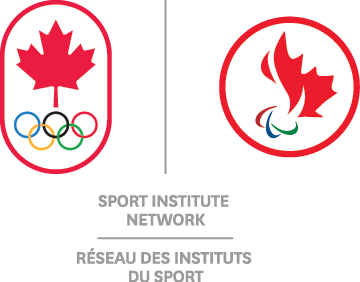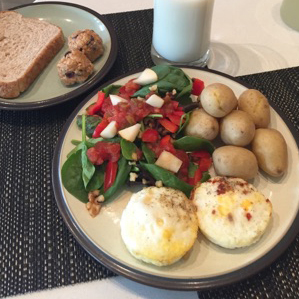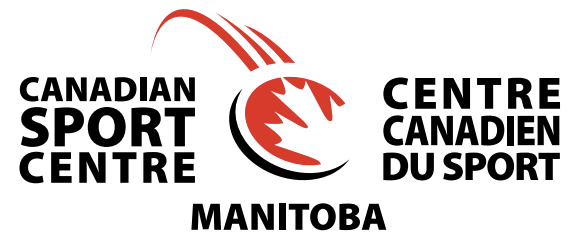Athlete Nutrition Tips: How to Eat Healthy while Travelling
Maintaining a high quality sports nutrition plan is essential for health and performance. But that’s not always easy when you’re on the road. Whether you’re travelling by foot, bike, bus, car or plane, it’s important to stick to your normal training diet.
Depending on your mode of transportation, you might encounter challenges like lack of suitable foods and fluids, food contamination, flight delays, special dietary needs, altered sleeping patterns and jet lag. Here are some suggestions to ensure you follow you nutrition plan away from home… and keep performing at your best!
How will you get there?
Travelling by foot
Even when you’re not flying across the country, you still need to have a nutrition plan in place to keep you fuelled for long hikes, bike rides or runs. Pack easy to carry foods that are high in carbohydrates, such as energy bars, sports gels/beans and sport drink powder or oral rehydration solutions. Plan your route to include places where you can stop and fill your water bottle.
Travelling by bus or car
The major nutrition concern for travelling by bus or car is dehydration. Air-conditioned vehicles increase your fluid needs, which means it’s even more critical to have enough fluids on hand. To avoid dehydration, drink one cup of fluid for every hour of travel. Choose water more often; limit caffeine and avoid alcohol.
While on the go, pack your own meals and snacks so you don’t need to rely on stopping at fast food restaurants. Keep foods at a safe temperature by bringing coolers or insulated bags with ice or ice packs. If travelling out of country, make sure you know what foods you can bring across the border and have a plan in place to stop at a grocery store once you have made it to your destination.
Travelling by plane
Those who travel by plane can also be at risk for dehydration thanks to the increased humidity and cabin pressure. Aim to drink one cup of fluid for every hour in flight, and limit caffeine-containing beverages. Bring your own water bottle and ask for more once you’re done!
Stick to your meal plan in flight! Set your watch/phone to the destination time and minimize jet lag by eating, drinking and sleeping accordingly. Keep yourself busy with books, magazines and games to avoid eating out of boredom. Bring hand sanitizer and wash your hands frequently to reduce the risk of illness.
Consider packing the following portable travel foods:
- Trail mix, chocolate milk, canned tuna, crackers, granola bars, dried cereals, nut butter, instant oatmeal, tortillas, sports drink powder, trail mix, applesauce, dried fruit, beef jerky, skim milk powder, spices
Where will you eat?
Before leaving for your planned destination, research the type of cooking amenities the hotel will have. Prepare in advance for where you will be eating most of your meals and learn what kind of food is available.
- Is breakfast served at the hotel? What time is it available and what’s the food selection like?
- Are the hotel rooms equipped with fridges/freezers, microwaves and kettles?
- What restaurants and grocery stores are near the hotel or venue, and what hours are they open?
Eating in the hotel room
If you’re an athlete following a sport nutrition plan, preparing some meals and snacks in the hotel room may be a safe and healthy option.
Here are some suggestions for how to plan and prepare nutritious meals and snacks in the hotel room:
- Pack a can opener, utensils, napkins, Ziplock bags and disposable dishes.
- Use the microwave to make scrambled eggs, oatmeal or a muffin in a mug.
- Keep fridges stocked with nutritious foods (fruit, yogurt, milk, veggies).
- Use the coffee maker to make steamed rice or broccoli.
- Make a grilled sandwich/wrap with cheese/hummus/canned tuna by using the hotel room iron (turn off steam!). Place ingredients in between two slices of bread and lightly butter the outside. Wrap in tinfoil and lightly press iron down and heat until outsides are golden brown.
Want more creative ideas? Check out these 10 healthy food hacks for travelling athletes... including instructions for making eggs in the hotel-room coffee maker!
Eating at a dining hall or buffet
Dining halls often have many different foods to choose from – but so many options and distractions can lead to overeating or choosing foods that may not achieve a successful performance outcome. Know your sport nutrition goals before you get there.
Consider these tips for choosing wisely at the buffet:
- Avoid overeating by first looking at all of the options available before putting them on your plate.
- Eat like you would at home; have one meal, following the same serving sizes you would typically have.
- Once you’ve finished your meal, leave the dining hall to avoid eating out of boredom.
- Limit high fat items such as foods that are fried, crispy, creamy, buttery or au gratin.
- Opt for healthier choices that are baked, broiled, steamed, poached or in tomato sauce.
Eating at a restaurant
Finding foods that meet the needs of your sport nutrition plan can be challenging when eating out. The options can seem overwhelming and the portion sizes aren’t always appropriate.
Some ideas for making good nutrition choices when eating out:
- Review the menu ahead of time and choose a meal that fits your sport nutrition plan.
- Choose quality carbohydrates such as rice, pasta and whole grain bread. Include lean protein such as chicken, beef, fish, beans or tofu, and add steamed or raw veggies.
- If you’re going to the same restaurant multiple days in a row, avoid flavour fatigue by choosing different meals each day.
- Ask for a pitcher of water to have on the table to ensure you stay hydrated.
Although there are many challenges while travelling that may limit you from following your sport nutrition plan, effectively planning and preparing before travel is the key to successful performance away from home.




